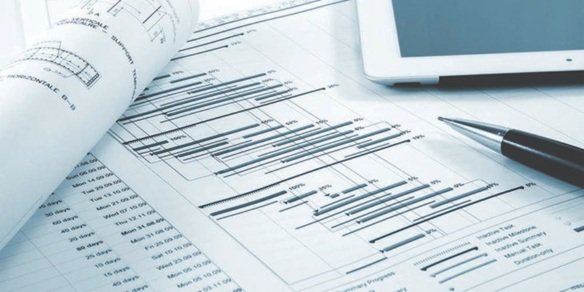In any project that involves staged work and structured financing—whether it’s construction, product development, or large-scale service delivery—a draw schedule is one of the most effective tools for keeping everything on track. While commonly associated with building projects, the principles behind a draw schedule apply across many industries. It’s a financial framework that connects progress with payment, helping to balance trust, accountability, and resource management in complex endeavors.
At its simplest, a draw schedule outlines how and when funds will be disbursed throughout a project. Rather than releasing the full amount upfront, payments are tied to specific milestones or phases of work. This staged approach supports better oversight, reduces financial risk, and aligns incentives between parties—making it a critical component in managing both expectations and outcomes.
Breaking Down the Draw Schedule
A draw schedule is a structured payment plan tied to project progress. It’s typically laid out in phases, with each stage tied to a percentage of the total contract or loan amount. The schedule might look different depending on the industry, but the core principle remains: work gets done, it’s verified, and then payment follows.
Let’s say a marketing agency is launching a multi-month campaign for a client. Instead of charging the full amount upfront, they might break the project into milestones: strategy development, creative production, launch execution, and final analysis. Each of those stages would correspond to a specific “draw,” triggered upon completion and approval.
In product manufacturing, a similar approach could apply: initial design, prototyping, testing, and mass production. For service contracts, like IT system overhauls or consulting work, draw schedules can be tied to deliverables such as planning documents, system installations, or staff training sessions.
The goal is to create a clear structure where both parties know what to expect. The client sees tangible progress before releasing funds, and the vendor or contractor gains predictable cash flow to support their work.
Why Draw Schedules Improve Project Management
Projects can easily go sideways without structure. One of the key benefits of a draw schedule is that it adds financial discipline to the process. By tying payments to progress, it reduces the temptation—or risk—of doing the bare minimum while still getting paid. It also keeps clients and vendors aligned on the timeline and deliverables.
This arrangement helps manage risk on both sides. Clients aren’t handing over large sums without results, and service providers aren’t left wondering when or if they’ll be paid. It becomes a mutual agreement built on transparency.
Draw schedules also reduce ambiguity. In many projects, misunderstandings come from unclear expectations or payment delays. By laying out a phased plan in writing, both parties understand the scope, budget, and rhythm of the work. If problems arise, the draw schedule serves as a neutral reference point, guiding resolution.
Challenges and Considerations
As useful as draw schedules are, they need to be set up with care. Poorly structured schedules can disrupt cash flow or create friction between teams. If milestones are too vague, payments can be delayed over minor disputes. If they’re too aggressive, vendors may struggle to front the cost of completing a phase before being reimbursed.
Verification is also key. In some industries, third-party inspectors or project managers confirm that a phase is complete before releasing payment. In others, mutual sign-off or documented proof of completion is sufficient. Either way, the draw schedule only works if there’s agreement on how progress will be assessed.
It’s also smart to build in flexibility. Projects rarely unfold exactly as planned, and a rigid draw schedule can become a roadblock rather than a guide. Contingency planning—such as reserving a percentage of the budget for unforeseen needs—helps prevent disputes and keeps things moving even when surprises arise.
Draw Schedules and Digital Tools
Modern software tools have made it easier to manage draw schedules with less back-and-forth. Cloud platforms can automate invoice generation, track milestones, and even notify stakeholders when a phase is ready for review. These tools not only reduce administrative headaches but also add a layer of transparency to the process.
For example, platforms used in construction site inspection software often integrate progress tracking with financial workflows. When a site inspection is completed and approved, the system can automatically trigger the next payment phase. This kind of automation is becoming more common in fields beyond construction—like software development, product design, and event planning—where real-time updates and remote collaboration are part of the norm.
By integrating draw schedules with project management tools, businesses can better align their financial and operational planning. It eliminates the lag between work being done and payments being processed, which ultimately improves trust and efficiency.
Applications Beyond Construction
Though draw schedules are most often discussed in the context of construction financing, their benefits are far-reaching. Creative agencies use them to manage brand rollouts and advertising campaigns. Product developers apply them to innovation cycles, from ideation to launch. Event planners use milestone-based payments to fund venues, catering, and staff in stages.
Even in consulting, where work is often intangible, a draw schedule can bring clarity to what’s being delivered and when. A consulting firm rolling out a digital transformation project might define draws around key deliverables: discovery, system integration, user training, and post-launch support. Each step is paid upon delivery, ensuring both sides stay committed to the plan.
This structured payment system builds trust in partnerships, especially when long timelines and large budgets are involved. It encourages proactive communication, keeps cash flow steady, and gives everyone involved a clear understanding of progress and expectations.
Conclusion: A Smarter Way to Fund Progress
At its core, a draw schedule is about accountability—ensuring that money follows measurable, verified progress. It brings structure to projects that might otherwise be driven by guesswork or assumption. More than just a financial tool, it’s a communication device that keeps teams aligned and projects on course.
When designed thoughtfully, drawing schedules supports better budgeting, reduces conflict, and helps build stronger business relationships. Whether you’re overseeing a renovation, launching a product, or rolling out a new service, tying payments to progress is a simple but powerful way to manage risk and reward effort.
As businesses continue to embrace digital tools and remote work environments, draw schedules will likely become even more prevalent. They’re adaptable, effective, and—most importantly—grounded in a shared commitment to getting the job done right.
Refresh Date: August 21, 2025








